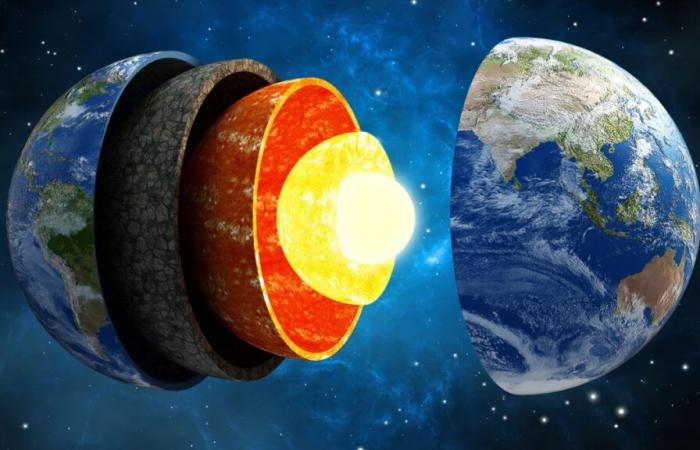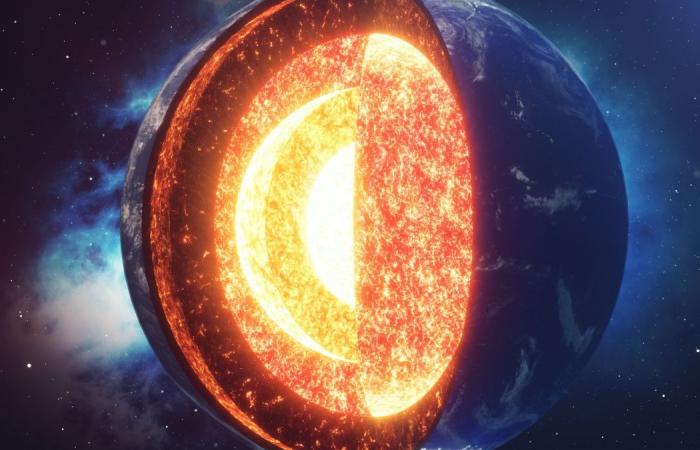Since 2008, the Earth’s inner core has been rotating more slowly, a phenomenon unprecedented since we had the means to measure it. This could affect the rotation of the planet, lengthening our days. However, it is more likely that it is the geomagnetic field that is affected. The study was published in the journal Nature.
An unprecedented phenomenon
Normally, the core rotates in the same direction and at a similar speed as the rest of the planet. This synchronization is due to the formation of the Earth from a rotating mass of matter. However, variations can occur, and geologists have long debated whether the core or the surface rotates faster.
Our knowledge of the Earth’s core comes mainly from observations of seismic waves, generated by earthquakes and nuclear tests of the past. These waves, when they pass through or bounce off the nucleus, provide us with valuable information about its characteristics.
It has been suggested that variations in the core’s effects on these waves are the result of movements of the core relative to the surface, resulting in relatively dense areas below the earthquake epicenter.
Revealing observations
Professor John Vidale of the University of Southern California compared data from 121 earthquakes that occurred between 1991 and 2023 in the South Sandwich Islands, whose seismic waves were recorded in North America. By analyzing the similarities of the waves, Vidale and his team were able to deduce the movements of the inner core relative to the Earth’s surface.
“We find that many multiplets exhibit waveforms that change and then return at later times to match earlier events”, write Vidale and his co-authors. These waveforms reveal times when the inner core returns to the same relative position to the mantle that it previously occupied.
These results, combined with previous studies, show that between 2003 and 2008, the inner core was “super-rotating”, rotating faster than the mantle and crust, leading to movements of dense plates on the surface. This period was followed by a slowdown starting in 2008, where the core began to spin more slowly than the rest of the planet.
Implications for Earth
Although the core continues to rotate in the same direction as the Universe, it appears to be moving backwards relative to the Earth’s surface. This gap, measured in fractions of a degree per year, was two to three times smaller during the slowdown than it was during the super-rotation. The core has a considerable amount of angular momentum, and even a slight slowdown requires immense forces. The study authors attribute this change to movements of the liquid outer core and gravity from dense areas of the mantle and crust.
The slowing of the core could have consequences on the overall rotation of the Earth, potentially lengthening the length of days. However, according to Vidale, this change would be extremely minimal, on the order of a thousandth of a second, and difficult to perceive due to the disturbances caused by the oceans and the atmosphere.
Additionally, although Earth’s geomagnetic field is primarily influenced by movements of the outer core, there could be some interaction with the inner core. This observed change could be linked to unexplained phenomena, such as magnetic field reversals, although this remains to be confirmed. In addition, scientists are detecting signs of a hidden structure in the Earth’s core.



